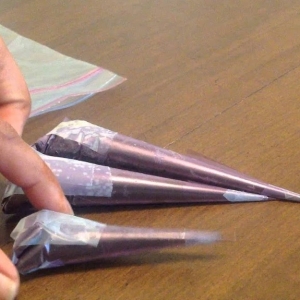Eyewear is no longer just about vision correction or sun protection—it's a fashion statement, a functional accessory, and, at times, even a status symbol. But beyond the design and aesthetics, the quality and type of material used in eyewear production significantly impact its comfort, durability, and appeal. This guide explores the most popular materials used in eyewear, from plastic-based compounds like TR90 to high-end options like acetate, titanium, and wood.
1. TR90 – Lightweight and Flexible
TR90 is a type of thermoplastic material renowned for its lightweight and flexibility. This material, a favorite among sports eyewear brands, can withstand significant impact without deforming, making it ideal for active individuals. TR90 frames are also hypoallergenic, so they’re comfortable for sensitive skin types.
Key features:
- High resistance to impact and stress
- Flexible and bendable, enhancing durability
- Lightweight, reducing nose and ear pressure
2. Acetate – Premium Feel and Customizability
Acetate is a plant-based plastic widely used for its variety of colors and textures. Unlike regular plastic, acetate is hypoallergenic, making it an excellent choice for sensitive users. It's crafted in layers, allowing designers to produce intricate patterns and color combinations that stand out.
Key features:
- Hypoallergenic and skin-friendly
- Durable and adaptable to custom designs
- Available in endless color options and patterns
3. Polycarbonate – High Impact Resistance
Polycarbonate is another popular thermoplastic in eyewear production, known for its high impact resistance. Initially developed for aerospace applications, polycarbonate is incredibly resilient, providing solid protection against scratches and fractures, making it ideal for kids’ and safety glasses.
Key features:
- Extremely durable and shatter-resistant
- Lightweight with high optical clarity
- Naturally UV-resistant
4. Stainless Steel – Strong and Corrosion-Resistant
Stainless steel has long been used in eyewear frames for its strength, durability, and resistance to corrosion. It provides a modern, sleek look while being lightweight. Many high-end brands use stainless steel to create durable, stylish frames with thin profiles.
Key features:
- Strong, yet lightweight and comfortable
- Resistant to corrosion and tarnish
- Thin profiles for a minimalist aesthetic
5. Titanium – Lightweight Luxury
Titanium frames are among the most premium eyewear options. Known for being exceptionally lightweight and resistant to corrosion, titanium is often used for high-end, minimalist frames. It’s a suitable choice for individuals seeking both comfort and durability in a luxury frame.
Key features:
- Incredibly lightweight, great for extended wear
- Resistant to bending and corrosion
- Hypoallergenic, suitable for all skin types
6. Wood – Eco-Friendly and Unique
For those seeking a natural and eco-conscious option, wood frames are an excellent choice. Each pair of wood frames is unique due to the grain patterns in the material. Wood is also sustainable and biodegradable, appealing to environmentally-conscious consumers.
Key features:
- Natural, eco-friendly option
- Unique appearance with distinct grain patterns
- Lightweight and comfortable for short-term wear
7. Aluminum – Lightweight and Modern
Aluminum frames are known for their sleek, modern appearance and lightweight feel. However, they’re slightly more prone to scratching than other metal options. Often anodized or coated to prevent corrosion, aluminum is a popular choice for fashion-forward eyewear.
Key features:
- Lightweight and comfortable
- Modern, minimalist aesthetic
- Usually anodized to prevent corrosion
Choosing the Right Material for Your Eyewear
Selecting the right material for your eyewear depends on your lifestyle, aesthetic preferences, and comfort needs. For sports and daily wear, TR90 or polycarbonate offer resilience and flexibility. For a high-fashion, luxury feel, acetate or titanium may be ideal. Finally, for an eco-friendly choice, wood provides a unique and natural look.
Understanding these material options can help you make an informed choice, ensuring your eyewear complements your lifestyle and style perfectly.






